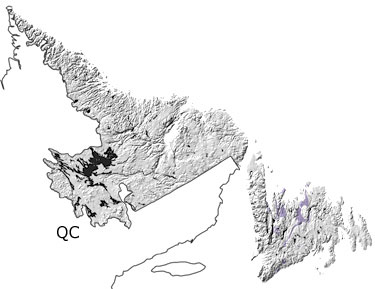

The Silurian in Newfoundland and Labrador, Canada |
|||||||||||||||||||||||||||||||||||||||||||||||||||||||||||
|
|||||||||||||||||||||||||||||||||||||||||||||||||||||||||||
Paleontology and geologyLabrador was above sea level during the Silurian, and the sediments eroding from its rocks were deposited over western Newfoundland. Those deposits include red sandstones and shales with cross-bedding, ripple marks, and mud cracks, evidence that they were formed in mudflats, beaches, and very shallow waters on the edge of the continent. As the Iapetus Ocean continued to close, the microcontinent Avalonia began to collide with Laurentia. This collision pushed slices of oceanic crust up onto land, generated substantial volcanic activity, and folded and faulted older rocks. Igneous rocks from volcanic eruptions and intrusions are common on the island, and in the southwest, an exposure of conglomerates, shales, and volcanic rocks records a mudslide down a volcano. In central Newfoundland, narrow basins formed by faulting as a result of the collision. Sandstones, shales, and limestones were deposited in the shallow to deep environments of these basins, and they record the great diversity of animals that flourished here. Fossils of corals, bivalves, brachiopods, bryozoans, cephalopods, crinoids, gastropods, ostracods, and trilobites are common, particularly in rocks on New World Island. |
|||||||||||||||||||||||||||||||||||||||||||||||||||||||||||
|
|
|||||||||||||||||||||||||||||||||||||||||||||||||||||||||||
|
site tour |
about the site |
site map |
site credits |
page credits |
help |
FAQs |
contact |
||


